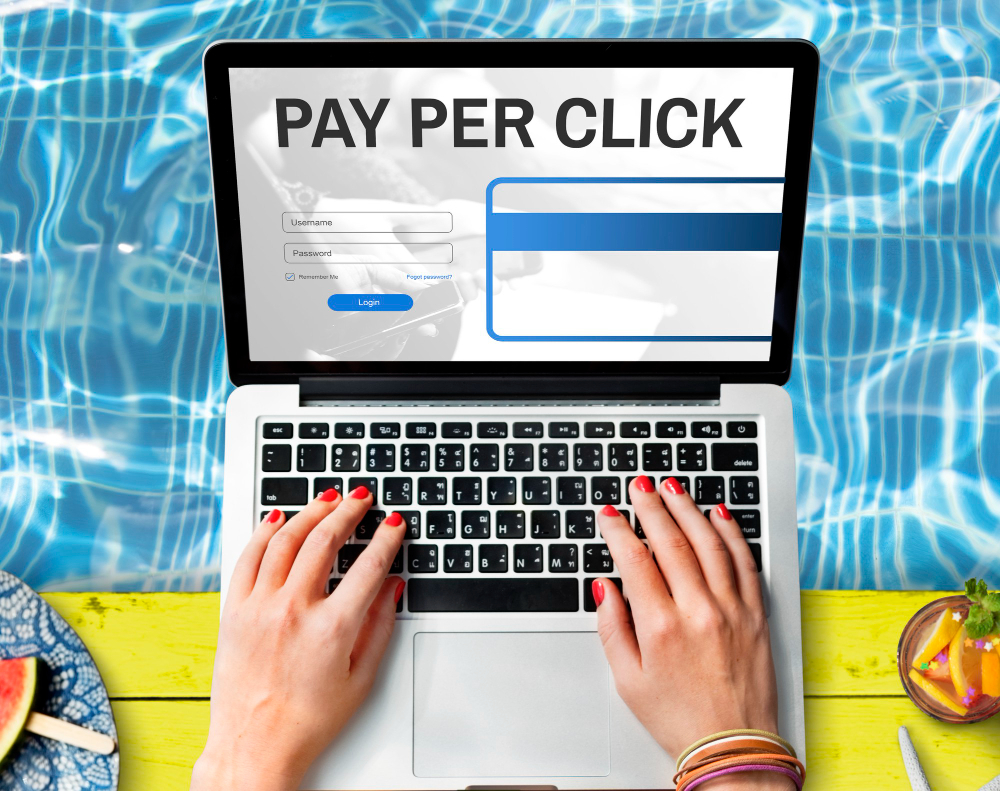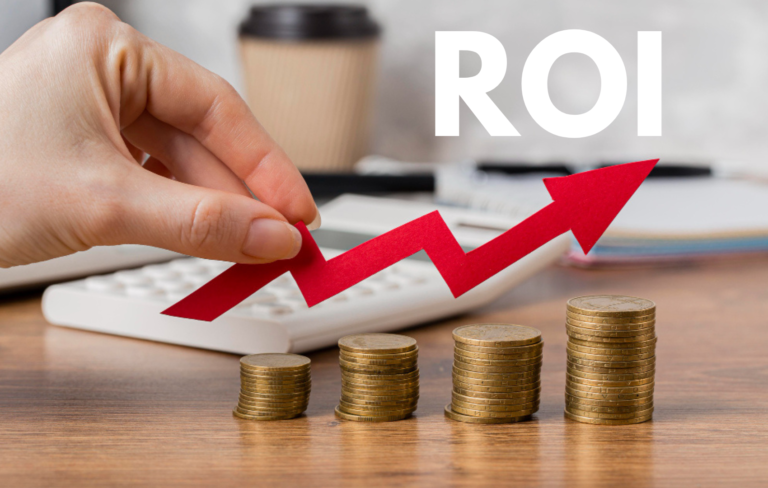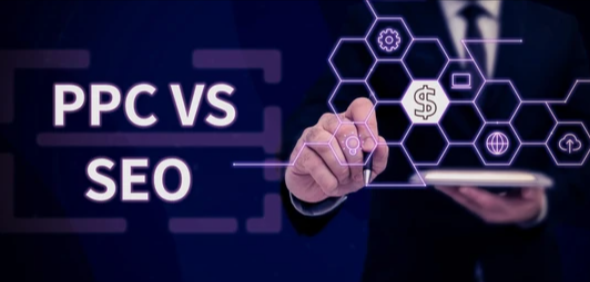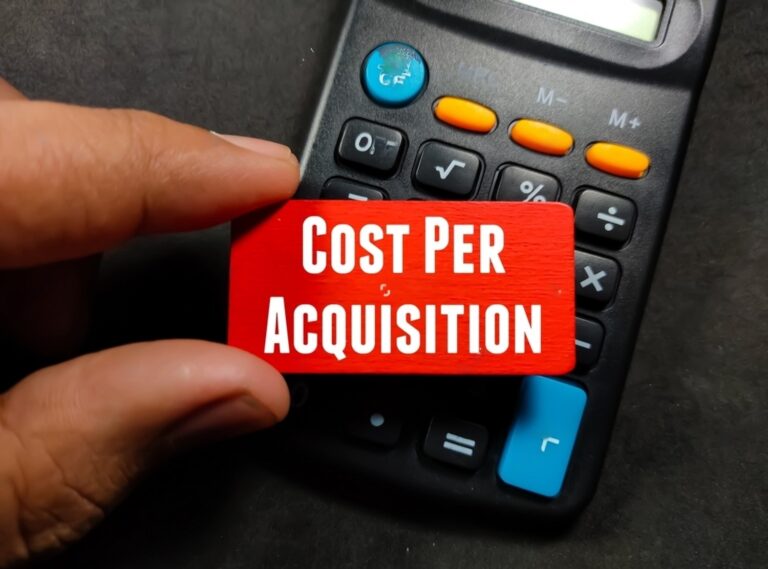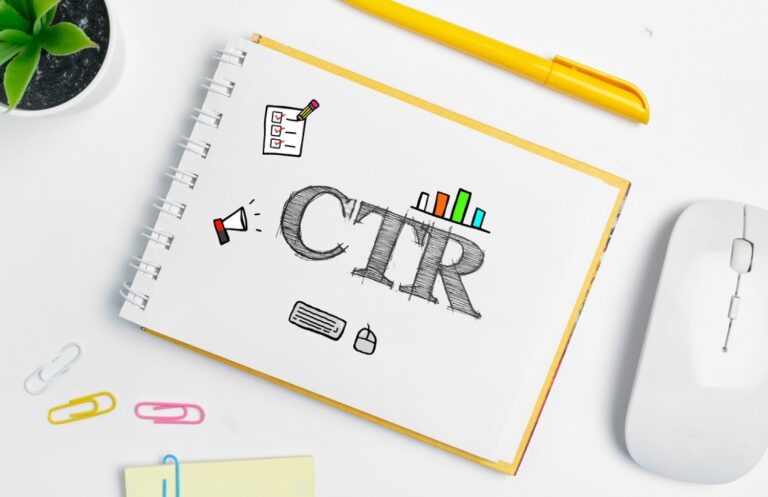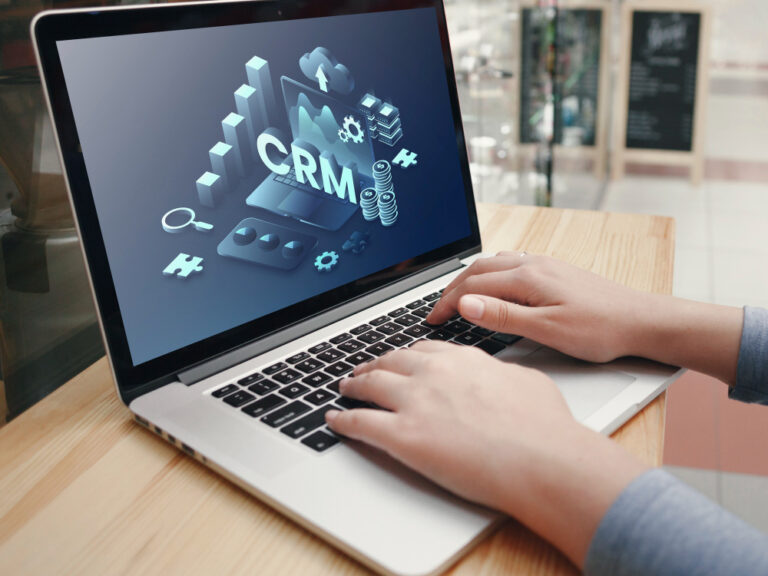What is PPC – Pay-Per-Click marketing?
PPC stands for Pay-Per-Click, a digital advertising model where advertisers pay a fee each time their ad is clicked. It’s like a fast lane to get your brand in front of potential customers when they’re browsing online.
Now, why is PPC so awesome? Picture this: You bid on keywords relevant to your business, and your ad pops up when someone searches for those keywords. You only pay when someone clicks your ad, not just for the ad being displayed. It’s like paying for direct traffic to your site!
PPC is a game-changer in digital marketing because it offers instant visibility and control over your budget. It’s like having a magic wand to target specific audiences, track results, and tweak strategies in real-time to get the best bang for your buck. With PPC, you’re not just hoping for clicks – you’re paying for them, making it a powerful tool for businesses looking to amp up their online presence and drive targeted traffic to their websites.
What is PPC Marketing?
PPC, which stands for Pay-Per-Click, is a digital advertising model where advertisers pay a fee each time a user clicks on one of their ads. Unlike organic methods, PPC is essentially a means of purchasing visits to your website. PPC ads are displayed across various platforms, including search engines (Google Ads and Bing Ads), social media networks (Facebook Ads), and other websites that have partnered with advertising networks.
At the heart of PPC marketing lies the concept of keyword bidding. Advertisers conduct extensive keyword research to identify the most relevant and high-performing keywords that their potential customers might use during their online searches. These chosen keywords become the linchpin of their PPC campaign, as they are used to trigger the display of the ad.
In practice, when a user enters a search query or visits a website that aligns with the chosen keywords, the corresponding PPC ad is served to them. If the user decides to click on the ad, the advertiser is charged a predetermined fee. This method ensures that businesses can reach potential customers who are actively seeking products or services in their industry, making PPC a highly effective advertising approach.
How Does PPC Work?
PPC campaigns operate through online advertising platforms such as Google Ads, Bing Ads, and social media advertising networks like Facebook Ads. Advertisers perform keyword research to pinpoint the most relevant keywords for their business. These keywords serve as the basis for their PPC campaign.
When a user conducts a search query or interacts with content related to these keywords, the corresponding PPC ad is triggered and displayed. If the user finds the ad appealing and clicks on it to learn more, the advertiser is charged a predetermined amount, hence the term “Pay-Per-Click.”
This approach is beneficial for businesses because it allows them to reach potential customers who are already expressing interest in products or services related to the keywords they are targeting. Additionally, the cost is incurred only when a user actively engages with the ad by clicking on it.
The Benefits of PPC Marketing
- Instant Results: One of the most prominent advantages of PPC marketing is its ability to deliver almost instant results. Once a campaign is set up and launched, your ads can start appearing on search engine results pages or social media platforms. This immediate visibility allows you to drive traffic to your website within hours, making PPC an invaluable tool for time-sensitive promotions and events.
- Highly Targeted Advertising: PPC offers the remarkable advantage of precise targeting. Advertisers can define their audience based on demographics, geographic location, interests, and online behavior. This level of precision ensures that your ads reach the right people, increasing the likelihood of conversions and minimizing wasted ad spend.
- Cost Control: With PPC marketing, you have complete control over your budget. You can set daily or campaign-specific spending limits, ensuring that you stay within your financial parameters. This cost control is invaluable, particularly for businesses with limited marketing budgets.
- Measurable ROI: PPC provides detailed analytics and reporting, offering insight into the performance of your ads. You can track key metrics such as clicks, impressions, conversion rates, and, most importantly, return on investment (ROI). This means that you can measure the effectiveness of your PPC campaigns with great precision.
Key PPC Strategies
- Keyword Research: The cornerstone of any successful PPC campaign is thorough keyword research. Identifying the most relevant and high-performing keywords in your industry is essential. Use keyword research tools to uncover valuable keyword opportunities and gain insights into the search behavior of your target audience.
- Compelling Ad Copy: Crafting engaging and persuasive ad copy is critical. Your ad copy should not only incorporate the chosen keywords but also highlight your unique selling points. Captivate your audience’s attention with clear and compelling language that encourages users to click through to your website.
- Landing Page Optimization: Your landing page is where users land after clicking on your ad. It must be user-friendly, relevant to the ad’s content, and optimized for conversions. Ensure that your landing page provides a seamless and informative experience, guiding users toward the desired action, such as making a purchase or submitting a contact form.
- Ad Scheduling: Timing plays a crucial role in the success of PPC campaigns. Use ad scheduling to set specific times for your ads to appear. By targeting your audience when they are most active and likely to engage with your content, you can enhance the efficiency of your campaigns.
What are the key PPC Metrics to Track?
1. Click-Through Rate (CTR):
Click-Through Rate (CTR) measures the percentage of users who clicked on your ad after seeing it. A higher CTR typically indicates that your ad copy, targeting, and relevance resonate well with your audience. It’s a valuable indicator of how engaging and compelling your ad is to users. Monitoring CTR helps in evaluating the effectiveness of your ad creative, headlines, and call-to-action (CTA). A low CTR might indicate a need for refining your ad copy, testing different variations, or targeting a more relevant audience to improve performance.
2. Cost Per Click (CPC):
Cost Per Click (CPC) is the amount you pay for each click on your ad. CPC varies based on factors like competition, ad quality, and bidding strategies. Monitoring CPC helps in managing your budget effectively. Lowering CPC while maintaining or improving other metrics like CTR and conversion rate is crucial for maximizing ROI. Strategies to reduce CPC include refining keywords, improving ad quality, enhancing landing page experience, and optimizing bidding strategies.
3. Conversion Rate (CVR):
Conversion Rate (CVR) measures the percentage of users who completed a desired action after clicking on your ad. This action could be making a purchase, signing up for a newsletter, or filling out a form. A high CVR indicates that your ad and landing page are effectively persuading users to take the intended action. Monitoring CVR helps in understanding the quality of traffic driven by your ads. Optimizing ad messaging, landing page design, and the conversion process can positively impact CVR.
4. Return on Ad Spend (ROAS):
Return on Ad Spend (ROAS) calculates the revenue generated for each dollar spent on advertising. It’s a crucial metric for assessing the profitability of your campaigns. A higher ROAS indicates a more efficient use of advertising budget, generating more revenue relative to the ad spend. Monitoring ROAS helps in determining which campaigns or channels are delivering the best returns. Optimizing ROAS involves adjusting bidding strategies, targeting high-value audiences, and focusing on campaigns with higher revenue generation potential.
5. Quality Score:
Quality Score is a metric used by platforms like Google Ads to assess the relevance and quality of your ads, keywords, and landing pages. It influences ad rank and CPC. A higher Quality Score often leads to lower CPCs and better ad placements. Improving Quality Score involves creating relevant ad content, optimizing landing pages, choosing targeted keywords, and improving user experience.
6. Impression Share:
Impression Share measures the percentage of times your ads are displayed compared to the total eligible searches for your targeted keywords. A higher impression share indicates better visibility and potential for reaching more users interested in your offerings. Monitoring impression share helps identify opportunities to increase ad exposure and reach by adjusting bids, improving ad relevance, and targeting.
7. Cost Per Acquisition (CPA):
Cost Per Acquisition (CPA) calculates the cost of acquiring a customer or lead. It measures the effectiveness of your campaigns in acquiring customers within your desired cost range. Lowering CPA while maintaining or increasing conversion rates is crucial for efficient campaign management. Optimizing CPA involves refining targeting, improving ad relevancy, enhancing landing pages, and adjusting bidding strategies to attract higher-quality leads or customers at a lower cost.
Paid Search Advertising and PPC Marketing: A Powerful Duo
In the ever-evolving landscape of digital marketing, paid search advertising, and Pay-Per-Click (PPC) marketing have become inseparable allies. Together, they empower businesses to harness the immense potential of online advertising. In this comprehensive guide, we’ll take a deep dive into the multifaceted world of PPC marketing and explore how it complements paid search advertising, revealing the core principles, benefits, and key strategies to amplify your online presence and drive conversions.
Understanding PPC and Paid Search Advertising
Before delving deeper, let’s clarify the distinction between PPC marketing and paid search advertising. While PPC marketing encompasses various platforms, including social media, display advertising, and more, paid search advertising primarily revolves around text-based ads on search engines like Google and Bing.
PPC marketing, as a broader term, includes paid search advertising as one of its key components. It involves advertisers paying a fee each time a user clicks on one of their ads, irrespective of the platform. These ads can be displayed on search engines, social media platforms, websites, and more.
Extra Benefits of PPC Marketing and Paid Search Advertising
- Instant Results: The synergy between PPC and paid search advertising provides businesses with the ability to achieve immediate results. Once a campaign is set up, your ads can start appearing on search engine results pages, driving traffic to your website within hours. This speed is invaluable for businesses with time-sensitive promotions or events.
- Highly Targeted Advertising: The precise targeting capabilities of PPC and paid search advertising allow businesses to define their audience based on demographics, geographic location, interests, and online behavior. This level of precision ensures that your ads reach the right people, increasing the likelihood of conversions and minimizing wasted ad spend.
- Cost Control: Within PPC marketing and paid search advertising, you have complete control over your budget. Daily or campaign-specific spending limits can be set, ensuring that you stay within your financial parameters. This cost control is invaluable, particularly for businesses with limited marketing budgets.
- Measurable ROI: PPC and paid search advertising provide comprehensive analytics and reporting tools, offering insight into the performance of your ads. You can track key metrics such as clicks, impressions, conversion rates, and, most importantly, return on investment (ROI). This precision allows you to measure the effectiveness of your campaigns accurately.
Wrap Up
In the ever-evolving digital landscape, the collaboration between PPC marketing and paid search advertising offers businesses a dynamic and results-driven solution to maximize their online presence, drive targeted traffic to their websites, and achieve their marketing goals. As the digital marketing world continues to evolve, staying informed about the latest trends and best practices in these realms is essential for businesses seeking to make the most of their online advertising efforts.
By leveraging the strengths of PPC and paid search advertising, businesses can position themselves for success in a competitive online environment, ensuring they are visible to their target audience and poised for growth in the digital realm.
FAQs
1. What is the main difference between PPC and SEO?
– Answer: PPC involves paying for each click on your ad, providing immediate visibility, while SEO focuses on optimizing website content to rank organically in search engine results.
2. How much does PPC advertising cost?
– Answer: The cost varies based on factors like keywords, competition, and industry. You set your budget, and PPC platforms charge per click or impression.
3. Is PPC suitable for small businesses?
– Answer: Yes, PPC allows control over budget, targeting, and audience, making it beneficial for small businesses to reach specific demographics within their budget constraints.

